Editor of this issue: Antanas V. Dundzila
Copyright © 1987 LITUANUS Foundation, Inc.

|
LITUANUS
LITHUANIAN QUARTERLY JOURNAL OF ARTS AND SCIENCES
Volume 33, No.4 - Winter 1987
Editor of this issue: Antanas V. Dundzila ISSN 0024-5089
Copyright © 1987 LITUANUS Foundation, Inc. |

|
ROLAND POSKA
MACK GILMAN*
Roland Poska is my kind of artist. Unconcerned with current trends or fads, he quietly goes his own way. It is just coincidental that hundreds of artists are working with handmade paper today. When Poska started over 20 years ago, it was a very lonely path. He was attending Cranbrook Academy where he received his B.A. degree and where he was first exposed to handmade paper by Lawrence Barker, dean of the graphics department. Poska's interest was fired, and he's been hooked ever since.
At first his interest was limited to producing paper for graphic purposes. Eventually in 1967 he purchased his own beater, a machine that grinds the rags and pulp. The speed of the machine and length of the paper fibers can be regulated. Cotton rags, cut into one-inch squares, are the raw materials for the machine.
"Cutting up the rags is the monotonous part of the procedure," says Poska. "If you run short of rags, it'll take the shirt off your back.
"About one pound of cut rags will make about 30 sheets of rag paper measuring 11 by 14 inches," Poska estimates. "After a freeness test in which the length of the fiber is determined by placing a part of the pulp into clear water, the grinding may be continued if no fibers at all are desired. The horsepower varies on the machine. I run mine about 600 RPM, probably one-third faster than the usual 450 RPM. It takes from 10 to 30 minutes to grind the rag, depending on how fine you want it."
After grinding, the pulp is dropped into a vat. It's stirred up, and a screen the size of the paper desired is dipped into the vat, lifted out, and water left to sieve through. The screen is tipped over onto a felt sheet and the screen removed. Excess water is squeezed out in a press, the felt preventing the pulp from washing away with the water. By this time the paper has enough body to allow handling, and the sheet is lifted to a drying rack, where it may take six to eight hours or longer to dry, depending on the ventilation.
Poska uses the paper in his "Fishy Whale Press," a lithography studio known across the country. Here he creates lithographs for himself and other artists. The Fishy Whale and Poska's studio are located in a 3000-foot former bakery in Rockford, III. Fishy Whale is well-equipped. The 48 by 72 inch litho press is among the largest in the United States. It also boasts a large collection of Bavarian litho stones, each weighing about 600 pounds and measuring 36 by 50 inches. Poska initiated The Great Human Race, a series of prints by John Doyle that have been collected by museums throughout the country.
Poska creates his paintings by pouring the viscous pulp into the wooden forms. He adds pure pigment and uses end forms, (cut up elements of other panels), to help him compose. Even though the end forms are also paper, when the paper dries around them they create organic surface separations which Poska has learned to control.
Through years of experimenting, the paintings have evolved into unique expressions of Poska's love and awe of nature. You will never confuse Poska with any other artist.
I first saw the cast paper paintings at his one-man exhibition at the Milwaukee Art Center in 1976. This was the first one-man exhibition of handmade paper art by a major art museum in the United States. I was stunned when I saw this show. I thought that I was looking at miraculously preserved sections of old frescoed walls. The sun and rain and heat and cold appeared to have mellowed the colors and created extraordinary textures and separations in the surface.
The subject matter was and is nature. Poska captures the essence of nature in his work. They are wonderful abstractions of natural phenomena, both personal and universal.
When you visit Milwaukee, you must see the new Federal Plaza Building. It houses a 270-foot painting, From Blue to Blue, by Poska. The painting sections are 6 to 8 feet high and 12 to 16 feet long. Before the painting was installed in Milwaukee, it was previewed in Rockford.
There probably has never been a one-man exhibition like this one. One of the downtown area streets was cordoned off and Poska's heroic painting, all 270 feet of it, was laid on the street, and exposed for the first time. Poska had never seen it totally assembled. The Rockford Register newspaper had the painting on the front page in full color for everyone to see. Milwaukee reproduced the same photo, and thousands came to marvel and cheer.
Describing the painting, Poska says, "From Blue to Blue goes through the four seasons in one day, from pre-dawn darkness through the final movements after dusk."
Poska is no stranger to the Milwaukee art scene. He brought his Fishy Whale Press to Milwaukee and taught print making at the old Layton School of Art in 1963. He was' one of the founders of the Milwaukee School of the Arts and remained in Milwaukee until 1977, when he relocated to Wonder Lake briefly before settling in Rockford.
I have had the pleasure of representing and working with Roland for the past 10 years. I think of him as the "gentle giant" of art. Roland is 6-foot-4-inches, 280 pounds,
without a "mean bone in his body". He's all heart. And that shirt he throws into his beater? He is more likely to give it to a fellow artist.
About his current body of work, Poska writes, "Although the focal point of this body of work is the rising and setting sun, the overall interest is the visual feeling of compression and expansion. The compression of forms and color in an expanding field are a delight to work with. The variety of visual textures and the manipulation of surfaces always gives me wondrous respect for this medium. The final balance of all these forces at a particular moment of time thru human awareness is something I can only appreciate. Thus, continues my search and appreciation of more forces meeting, and parting."
Not pictorial, but obviously concerned with landscape, Poska lets you feel and experience nature through his eyes. What a beautiful vision!
ROLAND POSKA: Biographical Note
Born: Glasgow, Scotland of Lithuanian parents, 1938.
Rockford College, Rockford, IL, B.A. cum laude, 1961.
Cranbrook Academy of Art, M.F.S., Bloomfield Hills, Ml 1963.
Founder and Director of Fishy Whale Press in Milwaukee, 1965; located in Rockford, IL since 1978.
Rockford College Art Instructor, 1963-64.
Layton School of Art and Design, Milwaukee, Head of Printing
Department, 1965-74.
Milwaukee School of the Arts, Milwaukee, Co-founder
and Head of the Printmaking Department, 1974-76.
One-man show at Milwaukee Art Museum, 1976.
Published The Great Human Race series by John Doyle, 1977-86.
First show at Mack Gilman Gallery in Chicago, 1977.
Received Henry S. Reuss Federal Plaza Art commission for 270 ft.
painting exhibited in Rockford, IL, 1984.
Currently active nationally with numerous shows scheduled.
* Director of Gilman-Gruen Galleries in Chicago
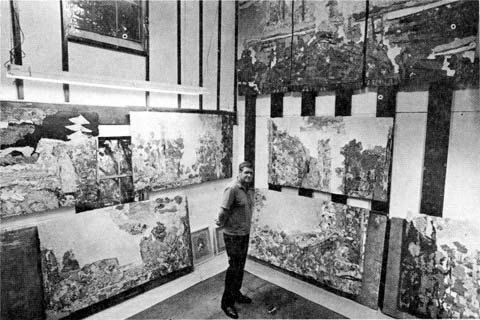
Roland Poska in his studio, Rockford, III.
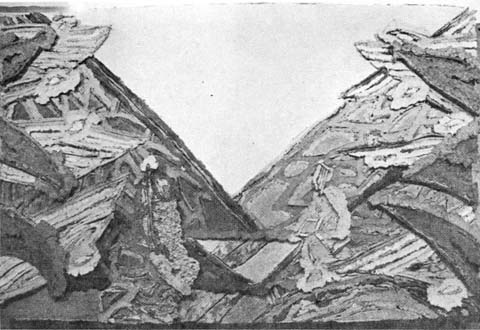
"Two sentinals," cast paper, 48"x72"
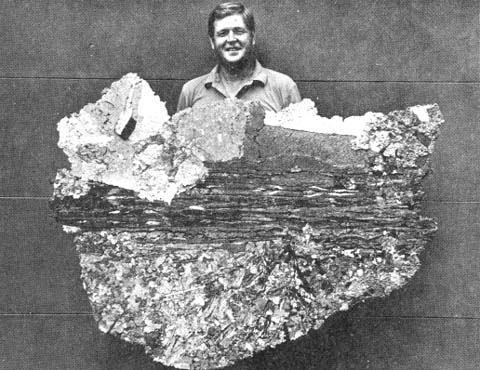
"Pink Cloud," cast paper, 54"x72"
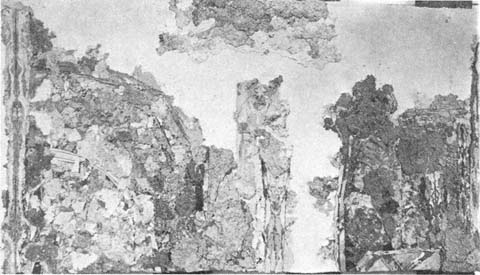
"Overhead Cloud," cast paper, 45"x78"
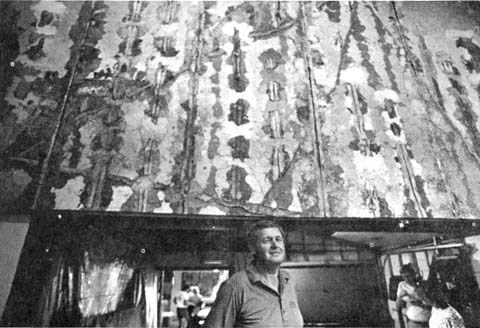
Roland Poska in his studio
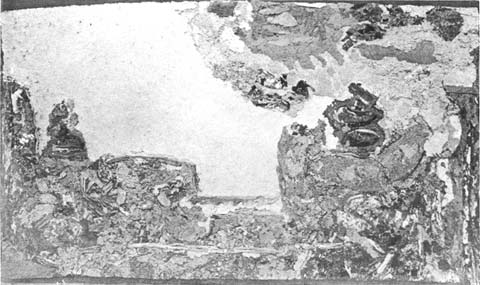
"Rain Prayer," cast paper, 46"x80"
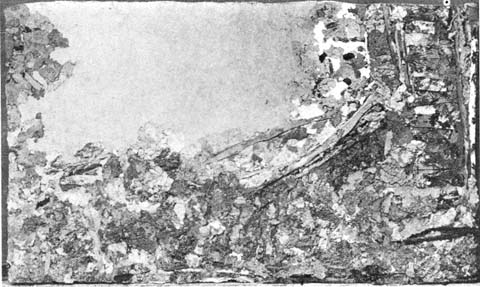
"Sun Prayer," cast paper, 47"x80"
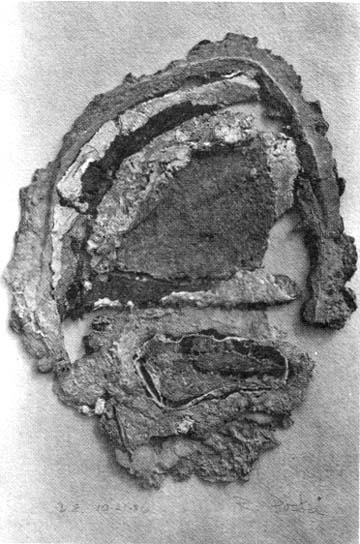
Roland Poska, "Study D.E. 10-2-86," cast paper, approx. 12"